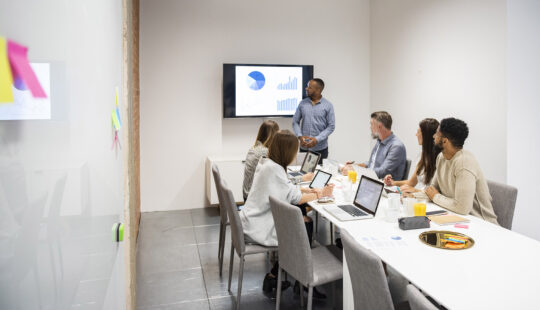The future of work is unfolding as we speak and it’s more flexible than we could have ever imagined when the global pandemic hit two years ago. A recent Mercer research report found that almost 60% of organizations in Australia were reinventing flexibility as a core part of transforming the employee experience.
“Employee benefits around health and well-being are a major topic within the Australian culture because people in this country expect more work-life balance,” said Chi Tran, head of Workforce Market Insights and Data at Mercer. “Organizations want to make sure they have the flexible programs in place to attract and retain people. We see well-being benefits becoming increasingly non-negotiable as a core component of an organization’s ability to deliver an effective employee experience.”
The same study also showed that 97% of organizations had a health and wellness benefits program in place, and employees were more attracted to organizations that have a sense of purpose.
Pandemic Puts Employee Wellness at Center Stage
Like everything else, the pandemic has fast-tracked the future of work. Another Mercer poll revealed that respondents from one in two companies in Asia-Pacific saw indications of worsening employee burnout and pandemic fatigue. As a result, Tran said many organizations are taking a risk-based approach with data-driven prevention programs to reduce insurance premiums while addressing worker well-being, particularly mental health.
“In addition to keeping responsive employee assistance programs in place, many companies are shifting to proactive strategies that bring people in with virtual wellness workshops on a more regular basis,” she said. “There’s no one-size-fits-all program. Organizations need to listen to their different employee cohorts, investing in benefits that will resonate with everyone’s unique needs.”
Personalized, Flexible Benefit Programs
One example is SAP’s global “Pledge to Flex” program designed to fit every employee’s role, style, and location while continuing to meet business and customer needs. At SAP ANZ, where the pandemic’s impact was nascent in 2020 but revved up through 2021, the company established a framework for employees to consider when determining their work style preferences.
“We want people empowered to find the ideal working style that will meet their individual, team, and customer success responsibilities,” said Debbie Rigger, head of HR at SAP Australia and New Zealand “We have parents with young children or other caregiving responsibilities. We have early talent working at home out of their bedroom. We want them to ask themselves, ‘What is my role? Who are my stakeholders and what are their expectations? What family-related and other personal commitments do I have? Given all these factors, what do I need to do my best work?'”
Looking ahead, Rigger expects to see the unexpected, meaning employee requests for things HR has never thought of before. In the meantime, the SAP ANZ team as doubled down on creating a safe in-person reentry experience for employees based on legislation and government guidance, as well as the company’s global policies.
“This has been more of a re-education for employees about the options they have and being transparent about what’s possible when it comes to working schedules that span full-time, part-time, compressed hours, job sharing, and even geographies,” said Rigger. “Given the border closures, people have been interested in traveling within the country while also being able to work remotely for a specified time period. Through candid conversations with managers, employees determine how, when, and where they work based on their personal circumstances and the needs of the business.”
Organizations Adjust Employee Experience to the New Normal
Flexible working practices are likely here to stay. IDC analysts predicted that by 2023, digital transformation and business volatility would drive 70% of G2000 organizations to deploy remote or hybrid-first work models, redefining work processes and engaging diverse talent pools. The beauty of being flexible is obvious during these times of rapid change and market uncertainty.
Rigger said SAP ANZ was already exploring how to make the most of the company’s office spaces in compliance with local legislation guidance. Hybrid work models might demand new spacial configurations, not just for social distancing but for fundamentally changed workplace norms. From impermanent individual workstations to virtual tools that let people effectively brainstorm when they aren’t in the same room, organizations need to create that employee community again, bringing people back into a space so they can continue to be more productive.
Companies still struggling with remote versus in-person work mandates are missing the point about addressing the opportunities the global pandemic continues to reveal. Innovative organizations will jump at this historic inflection point to redefine the future of work with benefits for both organizations and their employees.
Follow me @smgaler.
This also appeared on SAP BrandVoice on Forbes.



